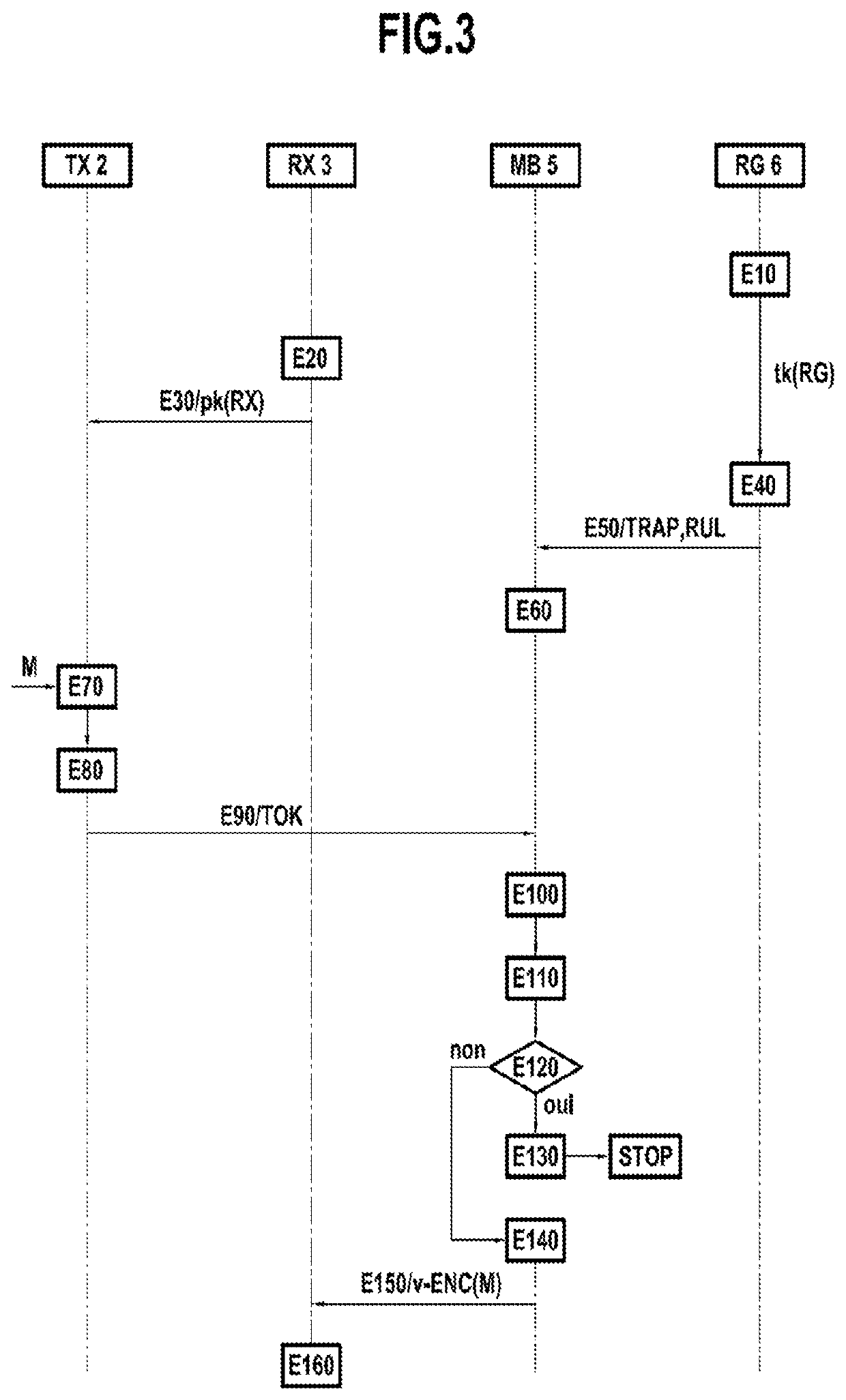Method of enciphered traffic inspection with trapdoors provided
a technology of traffic inspection and trapdoors, applied in the field of detection of intrusions, can solve the problems of unable to inspect the encrypted traffic exchanged, unable to use these systems, and powerless existing intrusion detection techniques
- Summary
- Abstract
- Description
- Claims
- Application Information
AI Technical Summary
Benefits of technology
Problems solved by technology
Method used
Image
Examples
Embodiment Construction
[0081]FIG. 1 shows, in its environment, a communication system 1 according to the invention, in one particular embodiment.
[0082]The communication system 1 comprises:[0083]a sender device TX 2;[0084]a receiver device RX 3; and[0085]an intrusion detection system 4 according to the invention.
[0086]The sender device TX 2 and the receiver device RX 3 are able to communicate with one another via a telecommunications network NW. There is no limitation attached to the nature of this network, besides the fact that, on this network, the communications between the sender device TX 2 and the receiver device RX 3 are secured via the use of a cryptographic encryption algorithm, described below. The network NW may thus indiscriminately be a public network, such as the Internet, or a private network, a fixed or mobile network, a wired or wireless network, it may consist of a single network or be formed of a plurality of sub-networks, etc.
[0087]The intrusion detection system 4 is configured so as to...
PUM
 Login to View More
Login to View More Abstract
Description
Claims
Application Information
 Login to View More
Login to View More - R&D
- Intellectual Property
- Life Sciences
- Materials
- Tech Scout
- Unparalleled Data Quality
- Higher Quality Content
- 60% Fewer Hallucinations
Browse by: Latest US Patents, China's latest patents, Technical Efficacy Thesaurus, Application Domain, Technology Topic, Popular Technical Reports.
© 2025 PatSnap. All rights reserved.Legal|Privacy policy|Modern Slavery Act Transparency Statement|Sitemap|About US| Contact US: help@patsnap.com


